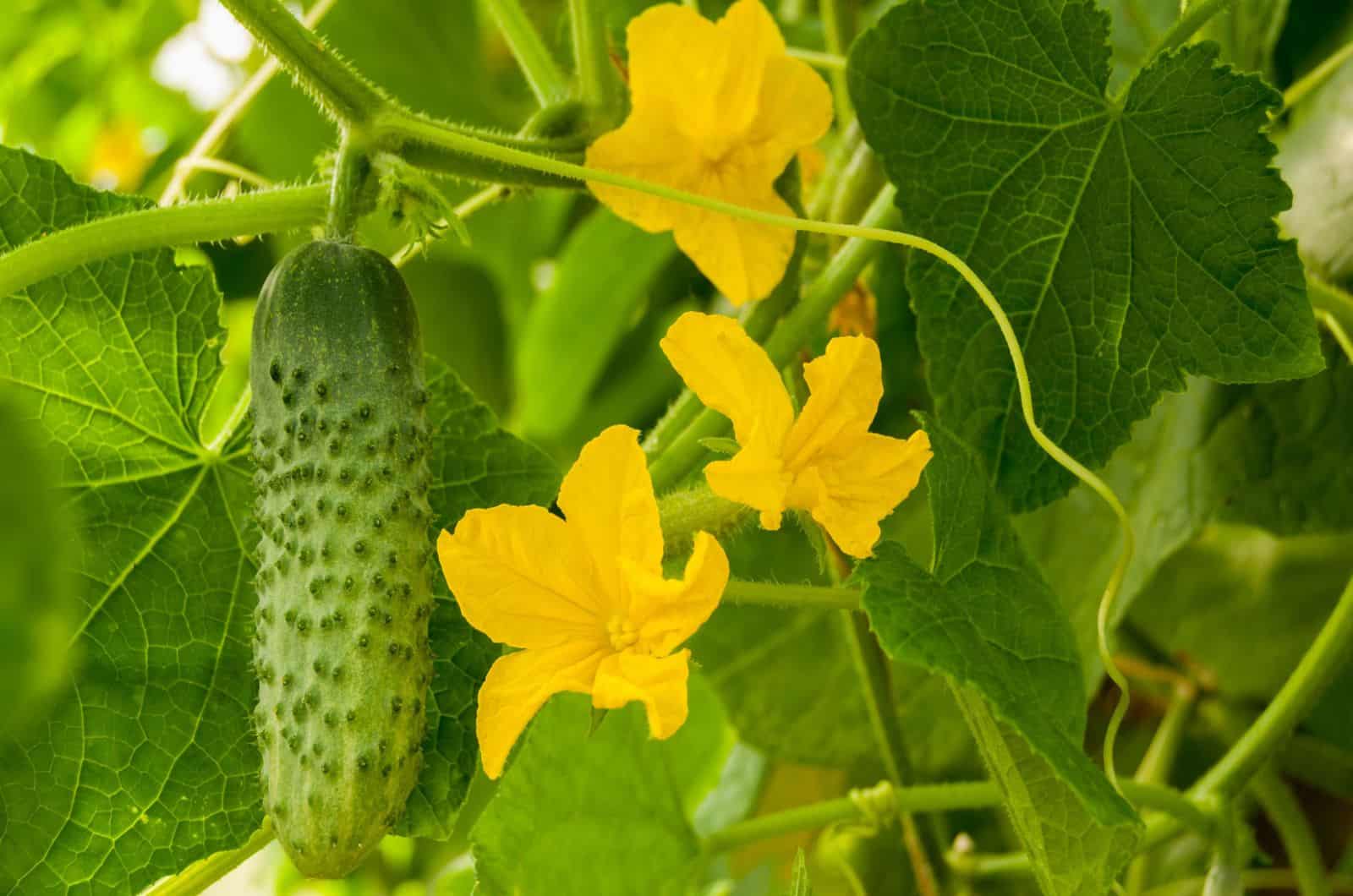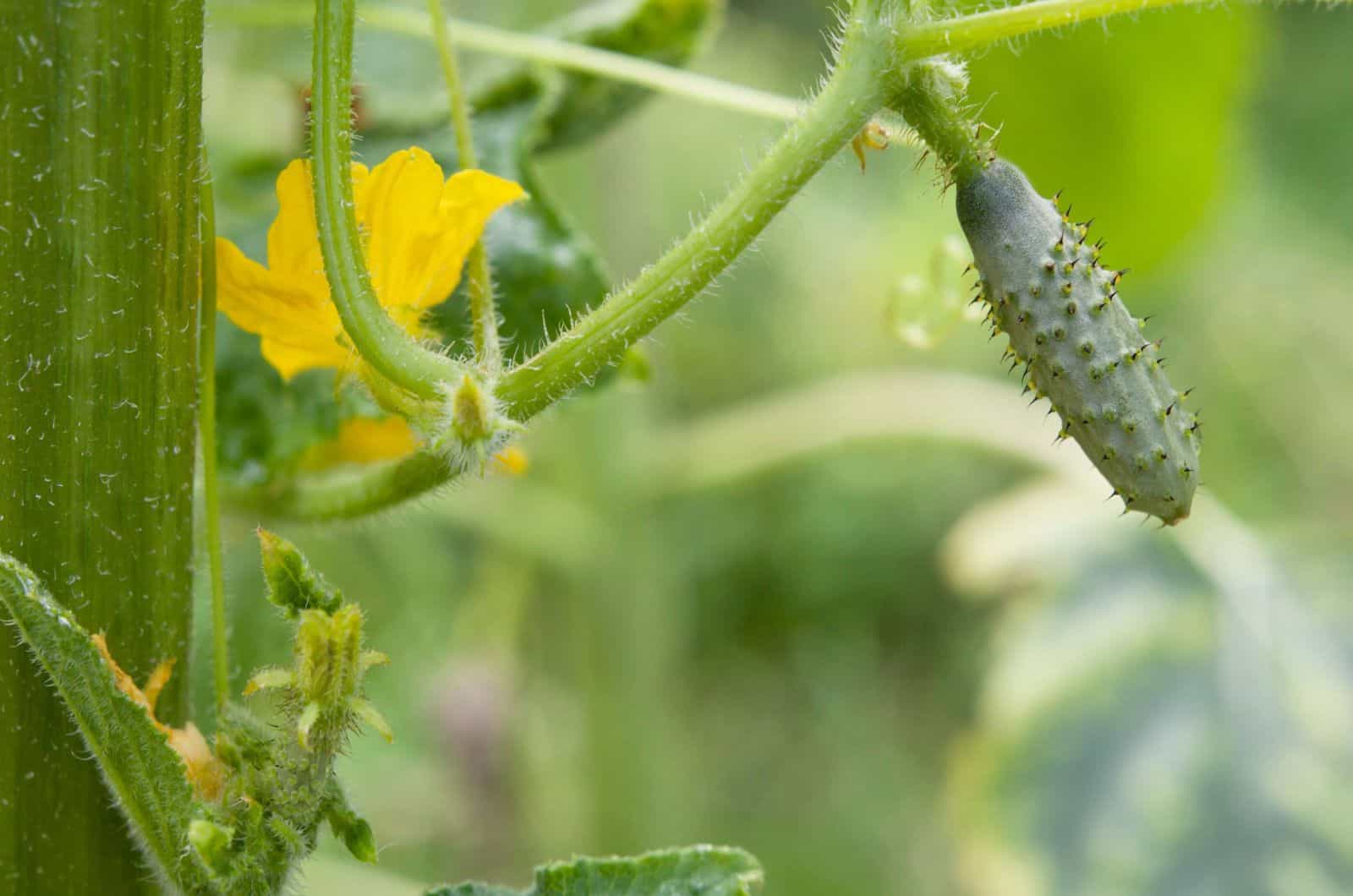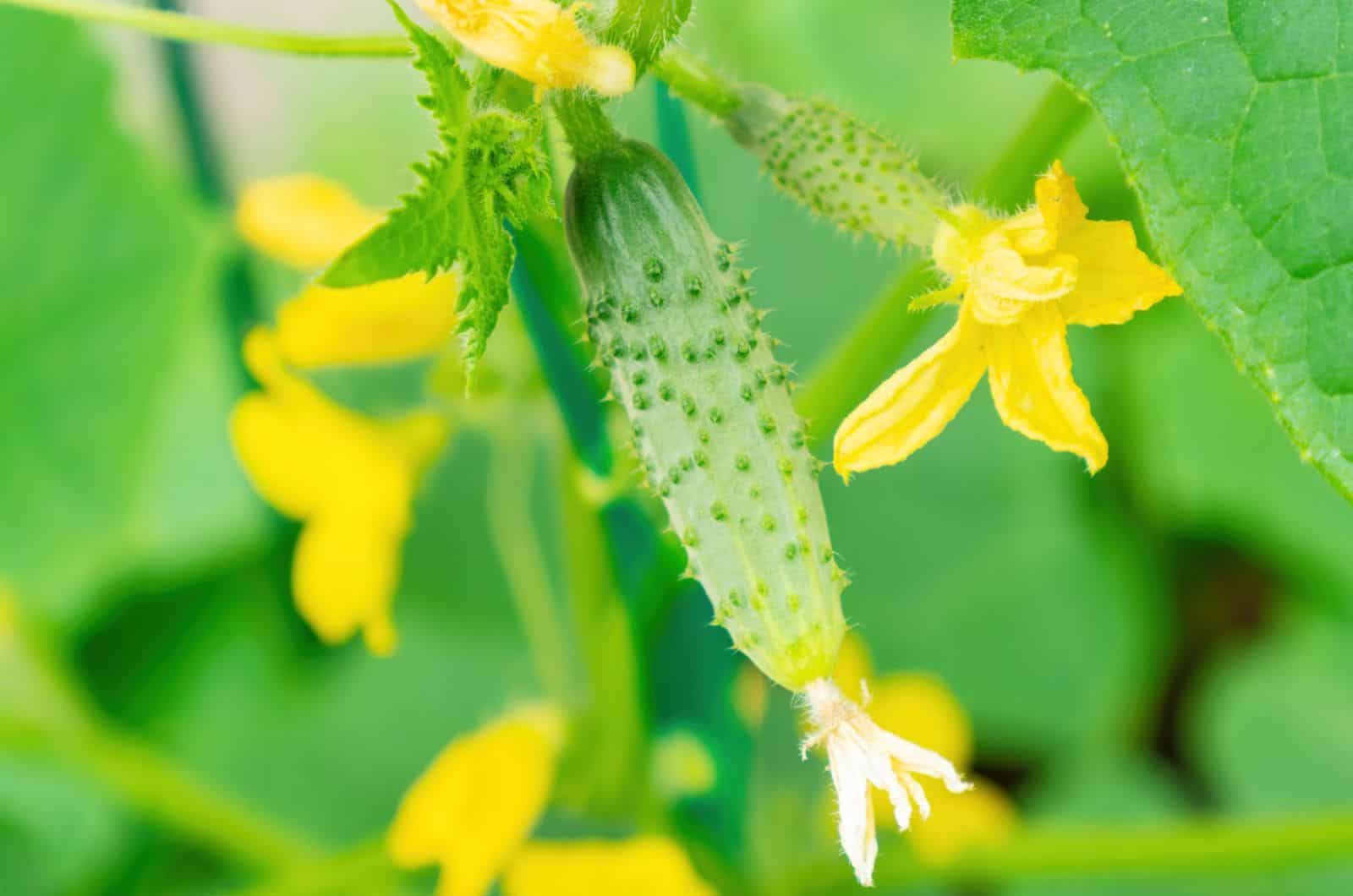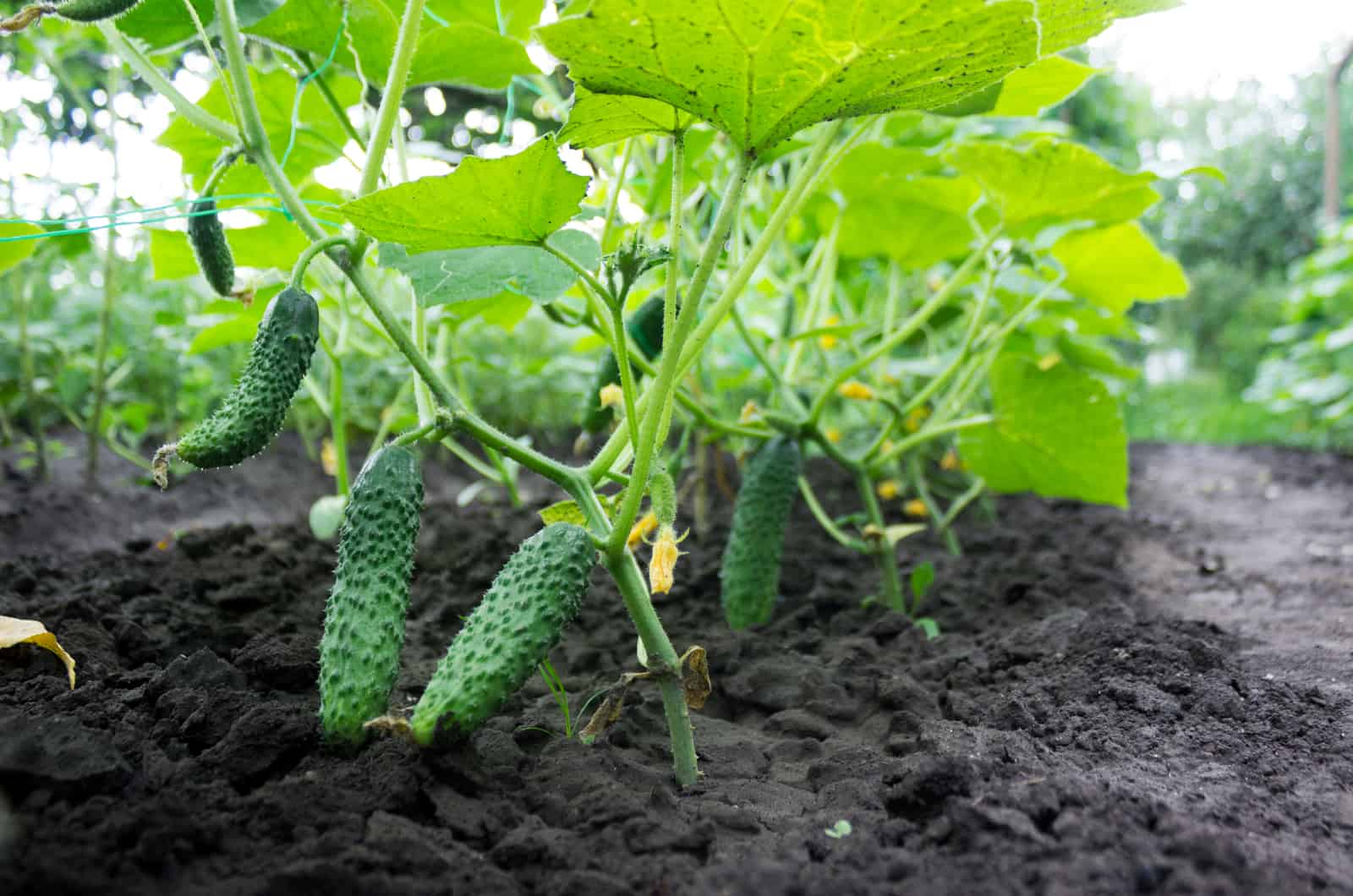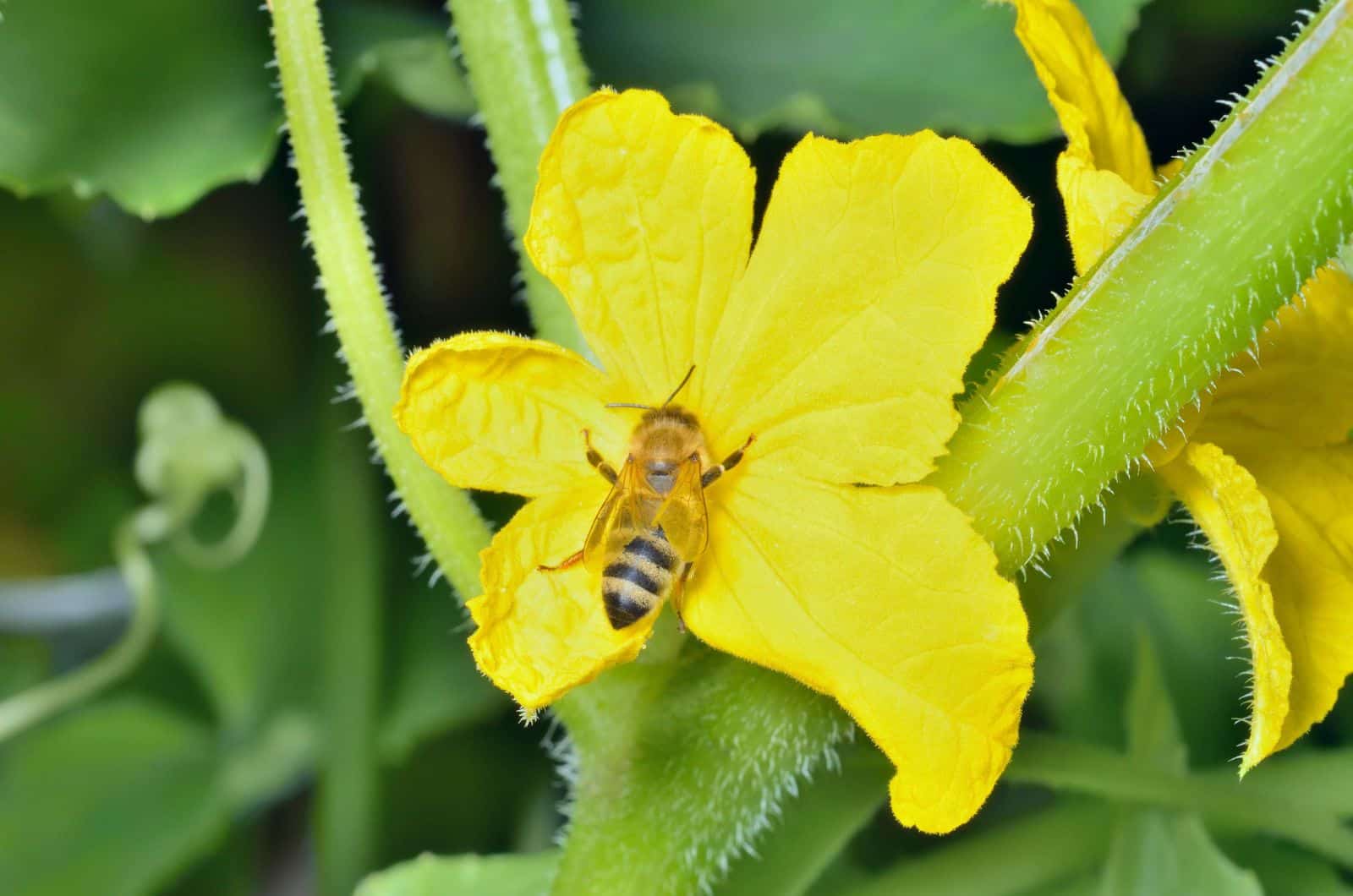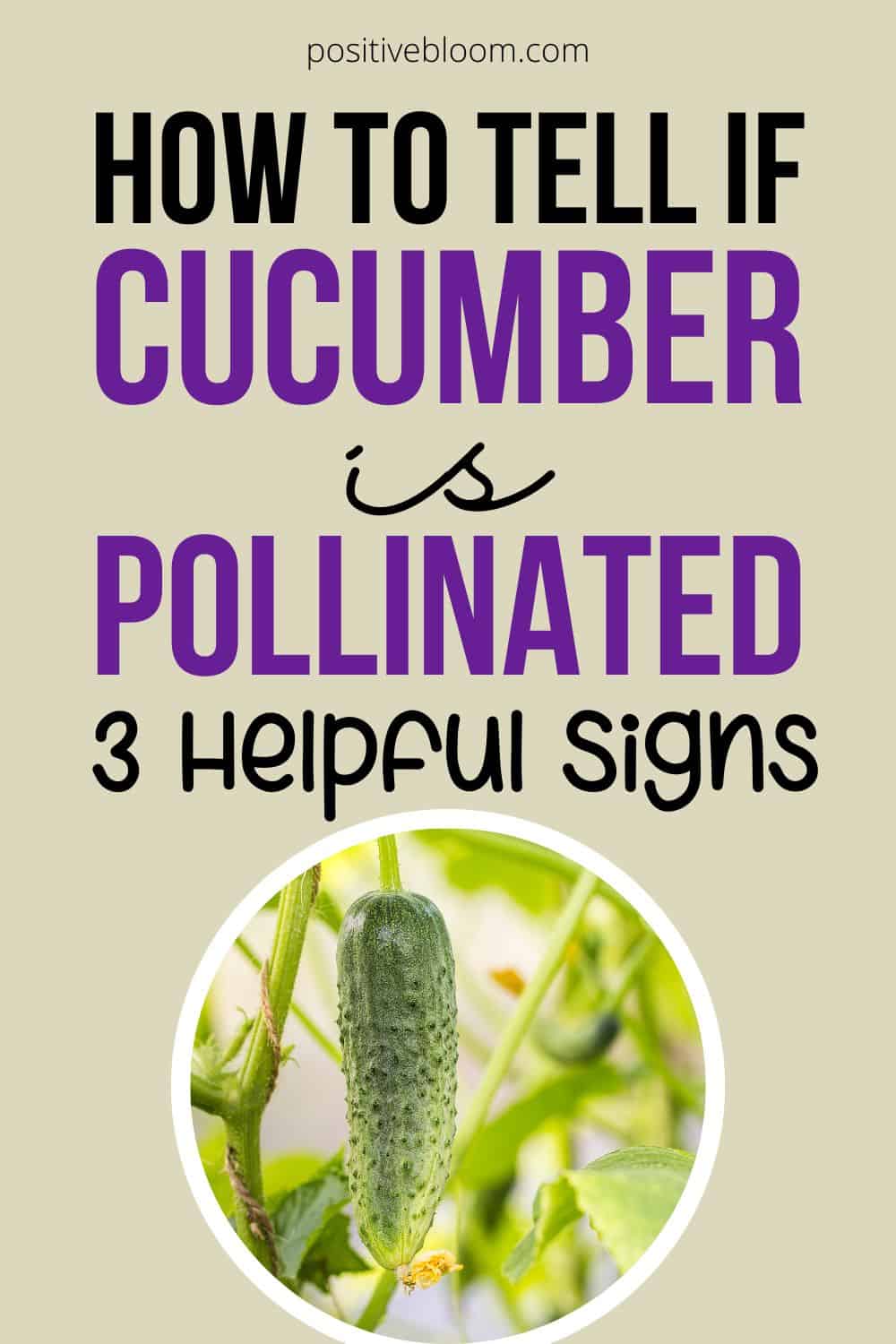Growers around the world invest their time and energy into cultivating cucumbers in vegetable gardens. These plants usually have a long growing season, which means you’ll have to wait some time for them to start maturing.
But once they ripen, you’ll soon get tired of harvesting them every morning!
Sadly, your cucumber plants may sometimes not produce fruit.
The main reason is pollination, or rather lack of it, which is why the main question in today’s article is: “How to tell if cucumber is pollinated?”.
We’ll also tackle some other questions about pollination, such as how to pollinate cucumbers, what happens if cucumbers aren’t pollinated, and more.
We’ll even mention some different varieties of cucumbers so that you can choose the best one for your garden.
Before we get into all of that, let‘s look at some specifics about cucumbers:
[table id=209 /]
How To Tell If Cucumber Is Pollinated: 3 Signs
Pollination is one of the most important parts of growing cucumbers because without it there wouldn’t be any fruit to pick in the first place!
There are three telltale signs that your female cucumber flowers have been pollinated: flowers dropping, female pistil dying, and setting of the fruit.
However, the entire plant has to be healthy in order to photosynthesize and produce the necessary food and energy for further development. Therefore, if you notice cucumber leaves turning yellow, you should find the cause and deal with it before the entire plant dies and you’re left with nothing but withered, fruitless stems.
Flowers Falling Off
Wilting flowers falling off isn’t necessarily a bad thing. Male cucumber flowers only serve to pollinate female flowers, and once their pollen is used, they’ll shrivel and die.
Once male flowers drop, pollination is no longer possible because there’s no more pollen available for the fertilization of the female flowers.
Female cucumber flowers will also drop once pollinated, but don’t weep for the yellow flowers that have been decorating your garden; they have fulfilled their purpose and will make room for the cucumber fruit we all enjoy.
Once the ovary has been properly pollinated, the flower will die, so you’ll know that the pollination of cucumbers has been a success.
Female Pistil Wilts And Dies
The pistil is a reproductive organ found on female flowers, and if it’s pollinated successfully, it will wither and drop. Its purpose is to produce an ovule and receive pollen, which aids in fertilization.
When it starts wilting and dying, you’ll know for sure that the flower has been properly pollinated and that the fruit will soon begin to form.
Of course, once the pistil has dropped, the female blossom cannot get more pollinated, so make sure not to stress your plant and give it plenty of water because the blooms may fall off in unfavorable conditions.
Some varieties even change the color of their pistil once pollinated, so monitor the blooms very carefully.
Fruit Setting
The most obvious sign that the cucumber flower has been pollinated is the fruit setting. It is also the primary goal of the pollination process, so if you notice a small fruit beginning to form, you can relax and look forward to the harvest.
The cucumbers will start growing, and you’ll spot a noticeable size increase in the first few days after the flowers fall off.
How To Pollinate Cucumbers
Pollination is the key to getting a high yield, so it’s essential to get it right the first time.
Cucumbers can either be pollinated by insects, or you can do it yourself. If you’re growing these veggies in a greenhouse or there aren’t many pollinators in your garden, you can fertilize the ova yourself to ensure a rich harvest.
You can read about various ways of pollinating cucumbers below.
Natural Pollination
Natural pollination is the easiest way of pollinating your plants because you don’t have to do any work. Just leave it to the insects!
However, not all bugs are pollinators, and if you ever wondered whether dragonflies are pollinators, we must sadly inform you that they are not. They actually eat other insects that pollinate your plants, so you should probably build your vegetable garden away from these insects.
But don’t despair; there are many pollinators out there, including honey bees, bumblebees, and all sorts of other bees, butterflies, wasps, etc.
Bees are the most common pollinators in the world, but bumblebees are actually more effective due to their size; they can transfer more yellow pollen and raise the successful pollination rate.
You can even place hives near your garden to double the benefits – you’ll have honey as well as veggies!
Hand Pollination
If you’re growing cucumbers indoors or there aren’t enough insects to pollinate them properly, you must take things into your own hands.
It is a delicate procedure, and you need to have steady hands to perform it. You will transfer pollen from the male anthers to the female stigma, and the easiest way to do so is by using a paintbrush or cotton swab. Rub the brush or swab onto the female stigma, and the hard work is done.
You can even use an entire male stamen to pollinate the female flower. Simply pick a male blossom, remove the petals until you’re left with nothing but the stamen, and gently shake the stamen, so the pollen falls onto the stigma.
It can be difficult to recognize male and female flowers.
Male blossoms flower in clusters of 3-5 blooms per stem, whereas female flowers always appear as single blooms.
Furthermore, male blooms usually have shorter stems than female ones and grow on thinner stems.
Finally, female flowers have ovaries in the middle, which look like undeveloped blooms.
Hand pollinating cucumbers is time-consuming, but you’ll end up with lots of fruits to enjoy, so you’ll forget all about how long it took when you’re making salads with your very own crops!
Are Cucumber Plants Self Pollinating?
Yes, cucumbers are self-pollinating veggies.
The term self-pollinating doesn’t mean that the plant pollinates itself and doesn’t need outside help – it simply means that these plants produce both male and female blossoms and don’t require pollen from other plants.
And the same goes for all cucurbits (a common name for melons, watermelons, pumpkins, zucchinis, etc.).
What Happens If Cucumbers Aren’t Pollinated?
Lots of flowers doesn’t always equal lots of fruit, and the plant can still experience pollination problems regardless of the number of blooms it has.
If there’s a lack of pollination, the cucumber fruit may be deformed. However, there are round cucumber varieties, so don’t mistake different species for unpollinated ones.
Inadequate pollination reduces the growth rate of cucumbers, and in some cases, the fruit won’t grow at all.
Fruit may also start to shrivel or have trouble developing, so you should prune it in order to stop the plant from wasting its energy.
Sometimes the issue may be that there are only male flowers on the stem. If this happens, you should prune some leaves and fertilize your plant with phosphorus-rich plant food to encourage further flower production.
Weather conditions and the use of pesticides can also affect insect activity, which would result in poorer pollination. Unfortunately, we cannot do anything about the rainy and cold weather, but we can do something about our use of insecticides.
Only use them when you are in dire need, this way, you can avoid unnecessarily harming the beneficial insects in your garden.
How To Attract Pollinators
If you don’t want to hand-pollinate an entire garden of cucumbers, you can introduce some bees and bumblebees to have them do the hard work for you.
The best way to attract pollinators is by ensuring they have enough food all year round (at least from spring to fall). Therefore, you should plant flowers such as hyacinths and marigolds near your vegetable garden and enjoy their attractive looks, as well as all the insects they bring along with them.
Use pesticides only as a last resort and make the bees feel comfortable by building a bee hotel for solitary bees. You can do this with some wood planks and bamboo, just hang it somewhere it’ll be sheltered from the rain and watch the bees move in.
Here are some great tips for transforming your garden into a bee resort:
You can also get creative with colors and smells to attract all sorts of pollinators. For instance, bees and bumblebees love lavender and honeysuckle, and not even butterflies can resist their fragrant blossoms.
Finally, ensure there’s enough water for your insect friends to relax after a hard day’s work. You don’t necessarily have to install birdbaths (although that’s one way to do it). Simply put a plate of water or any shallow dish outside so the insects can quench their thirst without drowning.
Different Cucumber Varieties
Now that you know all about pollination, it’s time to look at some different cucumber varieties. Below you can learn about three types of cucumbers that all have different male-to-female flower ratios and some that don’t require pollination at all.
Read on to learn all about these varieties and make your work a lot easier.
Monoecious Cucumbers
Monoecious cucumbers are standard cucumbers that have both male and female flowers on a single plant.
They produce more male than female flowers, which appear later than the male blooms. But they do grow, so give your plants some time if you don’t see the female blossoms at first.
This variety doesn’t offer a particularly high yield because the female flowers are fewer in number. They mature fast, however, and if you grow more plants, you’ll have enough cucumbers for pickling, making salads, drinking cucumber water, and more.
Gynoecious Cucumbers
Gynoecious cucumbers offer much higher yields than monoecious ones because they have more female flowers. This cucumber variety produces 70-100% female blossoms, but it cannot set fruit without a monoecious variety alongside it.
It needs plenty of male flowers to produce lots of fruit, and if you want the highest yield you should plant both varieties to enjoy fresh cucumbers all summer.
Parthenocarpic Cucumbers
Parthenocarpic cucumbers are everyone’s favorite variety because they don’t require pollination. Therefore, they belong to the list of the ideal vegetables for a greenhouse.
The only downside is that they don’t produce seeds, so you won’t be able to continue growing them the following year.
If you prefer seedless cucumbers, this variety needs to be isolated from other cucumber types to avoid cross-pollination, which may lead to producing hybrid fruit that contains seeds.
This variety of cucumbers is described as self-pollinating, but that’s not entirely true. The flowers don’t have to be pollinated at all to produce fruit, which means that self-pollination, hand pollination, and cross-pollination aren’t necessary.
You Asked Us
If your brain has stopped spinning from all this information about pollination and cucumber types, look at the section below to find more questions about cucumbers.
We have answered the most frequently asked questions about this wonderful green veg.
How many times does a cucumber need to be pollinated?
Cucumbers need to be pollinated once a week if you want to see the best results. Poor pollination causes deformed, slow-growing fruit or no fruit at all, so keep pollinating the cucumber flowers until you notice the first signs of pollination (flowers and pistils falling off).
However, if you grow your cucumbers outside in a vegetable garden, you won’t have to worry about pollination as there are plenty of insects (and even wind) that will do the job for you.
How long does it take for cucumbers to grow once pollinated?
It usually takes about 10-12 days for cucumbers to grow after pollination, but it really depends on the species.
Don’t let the high numbers confuse you; cucumbers take 50-70 days to grow from the germination stage – not after pollination.
How many cucumbers grow on a plant?
Most cucumber plants typically produce 10 fruits, but there are some varieties that can grow up to 20.
The number of cucumber fruits depends on their size as well, and healthy cucumber plants usually produce 5 pounds of fruit.
There are gynoecious cucumbers that produce mostly female flowers and have much higher yields. However, they need male flowers to get pollinated, and without monoecious varieties, the harvest won’t be as high.
On the other hand, monoecious cucumbers have more male flowers, so the best option is to combine the two varieties and enjoy the highest yield possible!
However, it depends on the pollination and the conditions in which the cucumber plant grows. If the pollination is poor, some plants won’t even yield a single cucumber. Cucumbers also need plenty of water and sunlight, and if they don’t get it the yield will be much lower.
The thing is, the plant won’t yield much fruit if you don’t take care of it from the beginning, so knowing how to start and care for cucumber seedlings is definitely something you should learn.
Final Word
Now we know how to tell if cucumber is pollinated, as well as how to pollinate cucumbers properly and what to do if they’re not pollinated.
We also learned some ingenious hacks for inviting more pollinators into your garden to relieve yourself of the stressful job of hand pollination.
The good news is that not all cucumber varieties require pollination, and this article also presented the three types of cucumbers based on their flowers and pollination needs.
Now all that’s left for us is to wish you (and the pollinators in your vegetable garden) good luck.
Until next time!
Like this post? Share or pin it for later!

